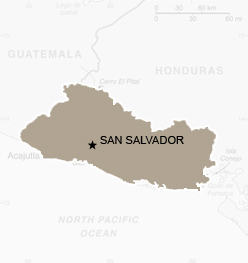

El Salvador
América Latina y el Caribe
El Salvador
Capital San Salvador
Población 7.1 million
Esperanza de vida 72.33
Acceso al agua potable 84%
Alfabetización de adultos 80.2%
Mortalidad de menores de 5 años 21.52 per 1,000 live births
PIB per cápita $6,200

 Esta evaluación es un ejercicio para generar conocimiento que busca: 1) evaluar la contribución del F-ODM, a nivel nacional, para alcanzar los ODMs, los principios de la Declaración de París y la iniciativa de reforma de la ONU conocida como "Unidos en la Acción"; 2) identificar buenas prácticas y las lecciones aprendidas para futuros programas conjuntos sobre desarrollo; y 3) conectar a las intervenciones de los programas a nivel local con los procesos de participación política a nivel nacional resaltando iniciativas piloto exitosas con potencial de replicación a mayor escala.
Esta evaluación es un ejercicio para generar conocimiento que busca: 1) evaluar la contribución del F-ODM, a nivel nacional, para alcanzar los ODMs, los principios de la Declaración de París y la iniciativa de reforma de la ONU conocida como "Unidos en la Acción"; 2) identificar buenas prácticas y las lecciones aprendidas para futuros programas conjuntos sobre desarrollo; y 3) conectar a las intervenciones de los programas a nivel local con los procesos de participación política a nivel nacional resaltando iniciativas piloto exitosas con potencial de replicación a mayor escala.
El Salvador_Country Final Evaluation.pdf (1.32 MB)-
Ficha informativa para el país
 This Fact Sheet summarizes the key achievements of the Joint Programmes in El Salvador.
This Fact Sheet summarizes the key achievements of the Joint Programmes in El Salvador.
Guatemala Joint Programmes Fact Sheet.pdf (211 KB)
